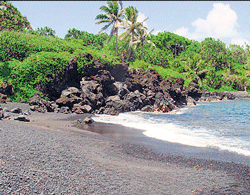India is all set to take its first step in utlising its vast thorium resource in nuclear reactors for power generation as the Centre has decided to start the construction of its first 300 MW (megawatt) thorium reactor by 2016-17.

The construction of advanced heavy water reactor (AWHR) that will use thorium as fuel would be launched towards the end of the 12th Plan period, V Narayansamy, minister of state in the Prime Minister's Office, informed the Rajya Sabha on Thursday.
A design of AHWR incorporating several elements of indigenous pressurised heavy water reactor has been readied by a team at Bhabha Atomic Research Centre in Mumbai, led by R K Sinha, who took over as the new chairman of the Atomic Energy Commission.
The 300 MW reactor might be located at Tarapur in Maharashtra or Kudankulam in Tamil Nadu, sources in the atomic energy department (DAE) told Deccan Herald.
The reactor will require 52 tonnes of fuel in its core initially. As the subsequent annual fuel requirement is only 4.7 tonnes, India can sustain on its thorium reserve for hundreds of years.
Exploitation of thorium was conceived by Homi Bhabha in 1960s while framing India's three stage nuclear programme. The idea was to start with the limited amount of uranium available in the country and from outside, but eventually moving up to thorium.
The first thorium reactor would be a research project as several key technological issues were needed to be addressed before a thorium reactor was made commercial, said a DAE scientist. The lead time could be several decades.
As a fuel, thorium has certain advantages. It is a better quality fertile fuel, gives better performance in the reactor and offers less problem with storage and disposal.
On the flip side, there are serious problems related to corrosion of stainless steel vessels and pipes, radiation build up, higher cost in fuel cycle activity due to automated reprocessing and re-fabrication and separation of spent fuel solution to avoid long-term radiological impact. All of them posed major technological challenges, he explained.
The biggest plus point, however, is thorium's abundance in monazite-rich beach sands in Kerala and other states. India has an estimated 10.7 million tonnes of monazite sands (containing 8.4 lakh tonnes of thorium metal) occurring in beach and river sands in association with other heavy minerals.
Out of nearly 100 deposits of heavy minerals, at present only 17 deposits containing about four million tonnes of monazite have been identified as exploitable.
